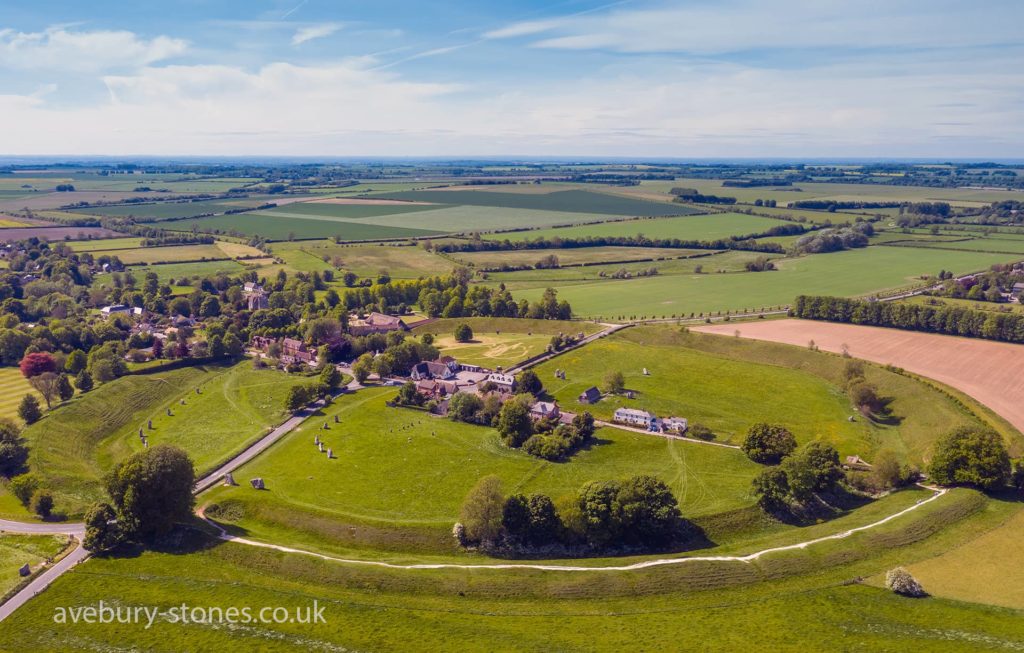The stone circle at Avebury is the largest stone circle in Europe and consists of three large stone circles located close to the village of Avebury in Wiltshire, South-West England.
The village of Avebury is the modern version of the ancient name. The early Roman British settlers known as ‘Vultens,’ were probably the early farmers who built the church and the surrounding area. Cave paintings are still found in the area.

The first stone circle was discovered in 1818 near Avebury. It was a grouping of stones, surrounded by grass and about 3 miles from the village. That circle could have been used as a hunting camp.
Avebury is one of the 14 British UNESCO World Heritage sites and includes the largest stone circle in Europe. It also has the largest prehistoric mound – in the form of Silbury Hill, as well as one of the longest burial mounds.
- Why does this Wiltshire village draw hundreds of thousands of visitors each year?
- Why do electronic items mysteriously fail when used near the ancient energy lines running through the village?
- What secrets do the 5,000 year-old stones hide?
The Avebury Ring
The Avebury ring is found in Avebury in the county of Wiltshire. It is located about twenty miles to the north of Stonehenge and is approximately ninety miles to the west of London.
The Avebury ring is the oldest stone ring that is known to be in existence anywhere in the world and is even older than Stonehenge.
The large circle contains a grass bank that measures about 427m in diameter and reaches as high as six meters. Within the grass area is an inner ditch that can be entered via four entrances at each of the points on a cardinal compass.
After passing through the ditch visitors come upon a large circle of sarsen stones that wrap around about 28 acres of land. It is thought that the circle must have originally contained about 98 stones in order to complete the circle, but all that is remaining to the present day are 27 stones.
Within the circle of massive stones are two smaller stone circles that sit inside the centre of the Avebury ring. One is located in the Northern sector of the Avebury ring and there are four of the 27 stones left today. The other is in the Southern sector of the ring and has five or the original 29 stones still standing.
It is speculated that the inner circles were created first in about 2600BC while the outer circle and ditch were created later in 2500BC.
Each of the stones is suspected to weigh upwards of 40 tons with heights that measure over twenty feet, thus implying that the local inhabitants must have worked together in order to complete the Avebury Ring. Additionally, each stone was placed into holes in the earth that measured anywhere between six and 24 inches.
The ditch also would have required a large amount of effort to form, with the need to chop away about 200,000 tons of rocks. There are also some remnants of erosion that suggest the ditch may have at one time been filled up with water, making the stone rings appear to be sitting on an island.
Excavation studies have shown that there were 154 stones total when the Avebury ring was first built out of which 36 total are still standing.
There are three theories about why the stones may have been removed, the first two have to do with modernisation, in which the stones were moved so that crops could be planted and the rock could be used to build foundations of homes and shops.
The third theory is that in the 14th century the stones may have been broken up by Christian authorities in an attempt to remove pagan religion from the area.
It is often speculated that the Avebury ring was part of a large serpent design that passed through a circle to form an alchemical symbol and that the area may have been part of a temple.
Its exact use by ancient civilizations has not yet been fully understood.